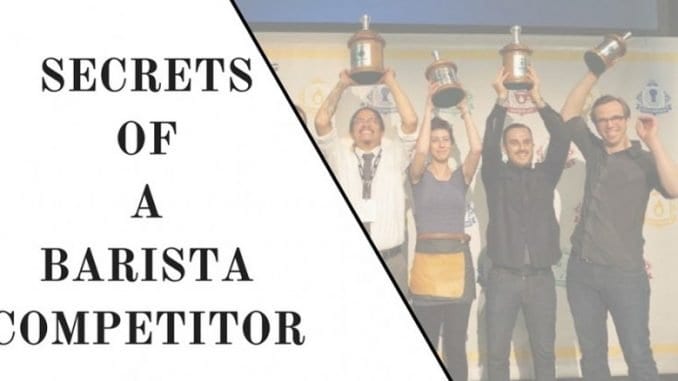
In this series, we’ll share the secrets of barista competitors. From choosing a theme to how to set a practice schedule, we’ll talk to seasoned competitors about how to compete smartly, efficiently, and effectively.
BY ASHLEY RODRIGUEZ
BARISTA MAGAZINE ONLINE
There are things you learn from practicing and then there are things you learn by watching. All barista competitors are told to practice, but there are things that you can’t figure out until you see someone else do them.
The first time I picked up a tip from watching someone else was when Tamara Vigil, then an educator for Irving Farm, covered the espresso machine with rags during her dial-in time. Why? “So the espresso machine doesn’t get dirty,” she told me, which makes sense since cleanliness of the machine is one of the things technical judges assess when you begin your routine.
Angelo Segoni of Quarta Caffe has watched hundreds of people compete. He’s the 2016 Italian Barista Champion, and if you looked closely at the audience in Atlanta during the United States Barista Championship, he was watching every single routine. “During my trip to the U.S. I scheduled not only my training for the World Barista Championship but also a visit to the USBC. I became very interested in all the innovations related to hospitality and most of all in understanding what flavors and coffees were chosen and in what way they were described. This was essential for me to grasp,” shares Angelo. Below, here are some of his tips for watching competition and what you can learn from your fellow competitors.
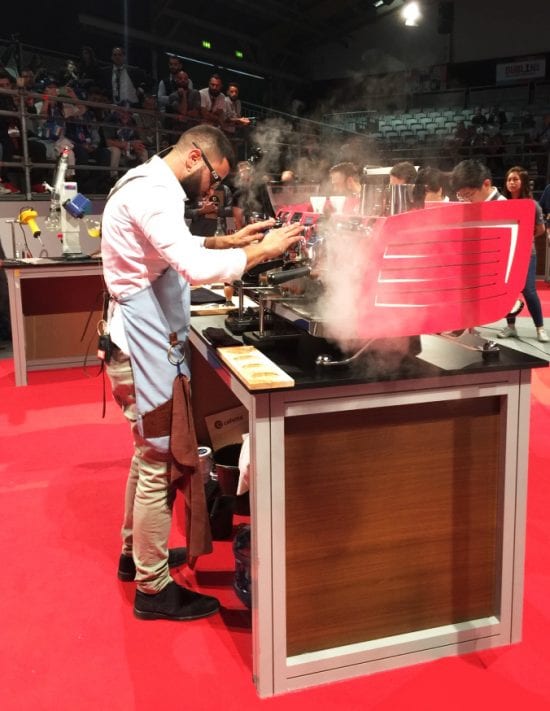
- Listen to the flavor notes.
Angelo describes his desire to watch U.S. competitors as a way to learn more about how we were describing our coffees. “One of the main aspects that I was looking for over there was of course the coffee and to see your relation with taste and how you would describe it. As an Italian I was very curious,” he shares. If you watch a few competitors back to back, you can usually see a few trends. Most competitors will use at least three flavor notes, addressing the three flavor indicators noted on the scoresheet (usually most people’s notes are “BLANK acidity, BLANK sweetness, and BLANK finish.”).
If you’re confused about how to describe your coffee, listen to competitors who have used coffees from your same region or have coffees that are processed in similar ways—if you’re using a Honduran coffee, listen to Charles Babinski’s 2015 USBC speech. If you’re using a honey-processed coffee, listen to how Laila Ghambari described her coffee during her 2014 winning routine.
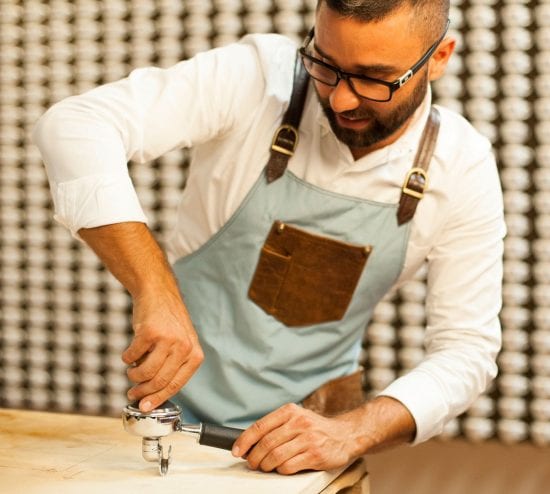
- Notice movements, behaviors, and instructions.
At competition, you’ll see some general forms and modes of behavior that are used by most competitors. You might initially want to stay away from some, but others are used time and time again because they work. For example, you’ll see dozens of competitors override the protocol for tasting espresso by usually telling the judges to mix their espresso vigorously or even to transfer it into another vessel. Why? Because most espresso tastes better cooler and fully incorporated with the crema.
Another part most competitors should take note of is how experienced competitors pull shots. Do they use scales? Timers? Why or why not? Lately, most competitors have steered away from weighing their espresso doses before pulling shots, which can seem counterintuitive but makes sense if you look at the scoresheet—competitors lose points for any espresso waste, so if you know your coffee well and trust your grinder, you can adjust accordingly.
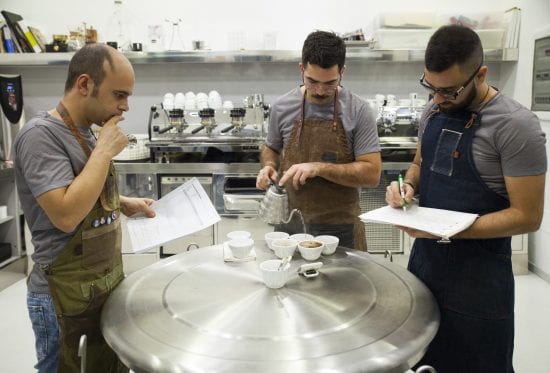
- Watch yourself.
It’s important to watch your competitors, but it’s also important to watch yourself. Either from past competitions or by recording yourself during practice runs, watching yourself illuminates quirks, word usages, and generally just gives you an idea of what the judges see when they’re watching you. “I watch the recordings over and over again to notice all of the mistakes during my routine, but I also found it very useful to observe and listen to when I speak to the judge and the tone of my voice as well as my movements and body language in front of the judge. I believe this is extremely important in order to take care of every single detail of the routine and the speech,” Angelo notes.
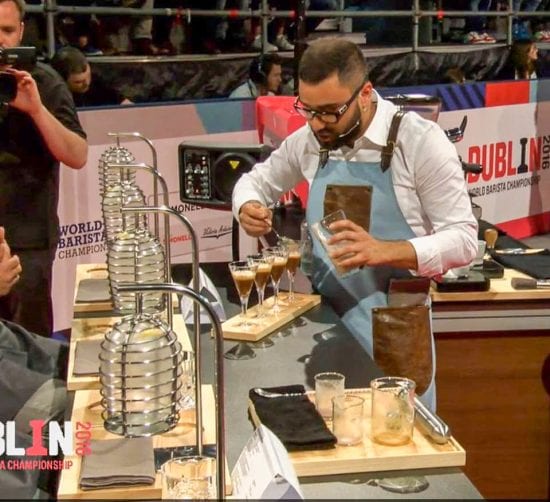
So take your phone or computer, and point it at yourself during your next run-through. If you’re feeling shy, don’t worry! These videos are only for you to learn and to perform better when you’re on the competition stage. And if you feel overburdened with prep work or need to take a breather, just turn to competition videos. It’s an easy way to continue to engage in prep work while giving your mind and body a bit of a break.

